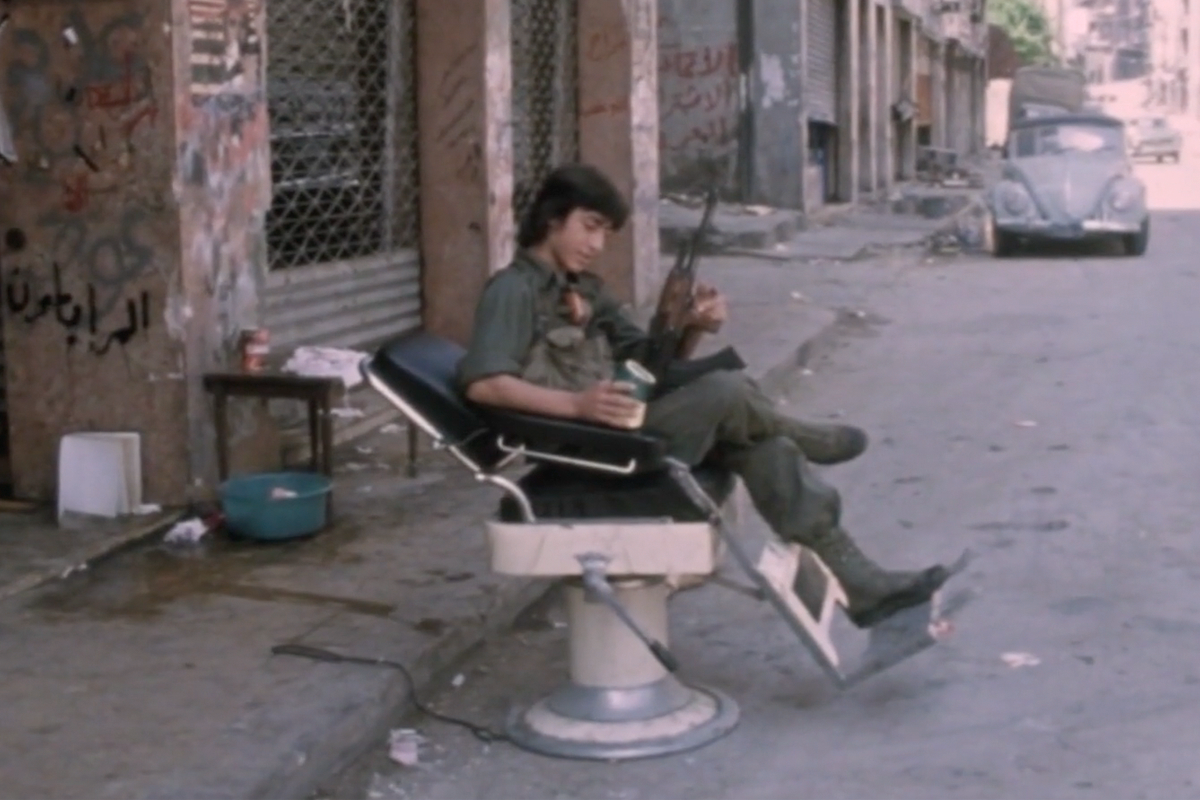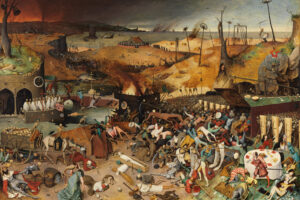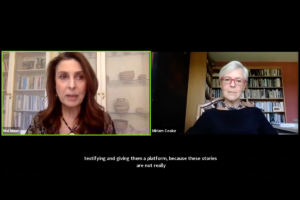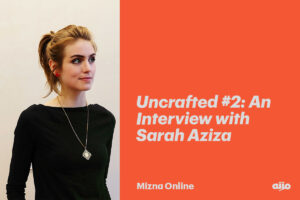
July 27, 2021
‘You Have to Treat an Image Like it Never Existed’: Jocelyne Saab’s Beirut Trilogy
Linda Mokdad
This text is presented as part of the Mizna Film Series, a monthly selection which expands our regular film programming to include screenings, critical essays, filmmaker interviews, and discussions exploring revolutionary forms of cinema from the SWANA region and beyond.
With the nationalization of the Egyptian film industry under Nasser, Lebanon was expected to replace Egypt as a distribution center for the Arabic-speaking world. The Lebanese Civil War (1975-1990) extinguished that hope, but it made way for a new generation of filmmakers who, rather than using a polemical lens, took a mostly personal approach to the conflict. This was not the didactic, militant filmmaking of Third Cinema, which responded to clearly delineated enemies and railed against European imperial and colonial expansion or American interventionism. External forces such as French colonization, Syrian occupation, Palestinian dispossession, and the Israeli invasions of 1978 and 1982 were certainly at work in the war. However, there was also a country divided along sectarian affiliations and conflicting political beliefs about the role of Lebanon in the region. This was an unfolding domestic catastrophe that had to be navigated delicately. Alternating between narrative films and documentaries, filmmakers Jocelyne Saab (1948-2019), Bourhane Alaouie, Maroun Baghdadi, Jean Chamoun and Mai Masri chronicled the protracted war that would take the lives of more than 100,000 people. Guided by deeply local concerns, but relying on foreign funding and training abroad, their work exhibits a jumble of national and transnational influences and tensions—not unlike the dynamics at play in the war itself. Marked by interstitial and liminal qualities, these diasporic and exilic films belong nicely to what Hamid Naficy has termed “accented cinema.”[1]
Saab’s movement between Lebanon and France, the multilingualism and epistolarity of her films, or her investment in historicity and identity situate her firmly under this rubric. Her background was in journalism rather than film, and some of her first jobs were in radio and television. Working with famed painter, writer, and cultural critic Etel Adnan at Al Safa, a French-language newspaper in Beirut, she had also gained experience as a war correspondent in Egypt and Lebanon before her foray into documentary filmmaking at the start of the conflict. Saab recalls her time with legendary German director Volker Schlöndorff as a turning point; it was after serving as his assistant on Circle of Deceit (1981) that she embarked on fiction film production, following a career in documentary she attributed more to the conditions of war than personal choice.[2] It seems important to point out however, that Saab’s documentaries were never simply centered on reportage. Beirut, Never Again, (1976), Letter from Beirut (1978), and Beirut My City (1982)—or what would come to be known as the Beirut Trilogy—privileged an essayistic and poetic style over the expository goals of news-focused documentaries. A poignant historical and profilmic record of the war’s grievous impact on Beirut and the country at large, paradoxically, the trilogy is also a rumination on the limitations of the image, or how it flattens both history and reality. As Saab once described it, “Beirut, today, contains this potential for images, fantasies, projections of oneself and of today’s reality.”[3] Despite (or perhaps because of) Beirut’s palimpsestic past, it has oscillated been two cultural assignments: the Paris of the Middle East—a placating Orientalist playground where East meets West, or a land of perennial violence that serves as another kind of shorthand for the region.[4] Saab’s vision of Beirut is instead full of productive tensions and contradictions, restoring to the city its historical weight and complexity. As a chronicle of the Lebanese Civil War, from its beginning to 1982—a particularly calamitous year that saw the siege of Beirut, Saab’s trilogy is also a poem and a love letter to her native city.
Beirut, Never Again (1976)
Made a year into the war, the first installment of Saab’s trilogy surveys the ruins of this “ghost town,” while the commentary, written by Etel Adnan, laments the physical destruction of Beirut. “Nothing disappears totally,” the narrator informs us, and there are visual and oral remembrances of spaces once busily inhabited—the lavish residential buildings, souks, banks, brothels, and tourist centers, now reduced to rubble. Beirut, Never Again is more a eulogy of a vanishing city than a political autopsy. As a result, it addresses the horrors of the war in broad and universal terms, opting to express its impact on children. Some of the film’s most surreal moments involve children taking up the tasks of adults, whether looting furniture from deserted buildings, selling wares in the street, or carrying rifles as fighters in militias. The film is full of these incongruities, in part because the mundane activities of life existed alongside the intermittent and extreme eruptions of violence. A militia member seen carrying a basket of vegetables in one hand and a shotgun in the other, or in Beirut My City, an old man watering his garden to the persistent sound of gunfire, amidst a city in tatters. Saab, had in fact, often appealed to surrealism to characterize the absurdities of the war. She once explained, “Life in Beirut is surrealistic, and André Breton … says something incredible, he says, ‘The biggest surrealistic act is to shit in a place and then leave it and go.’”[5] Beirut, Never Again regularly returns to the waste of war—the city streets littered with objects—hastily abandoned record players and typewriters or mangled mannequins that uncannily evoke their long-absent owners. The narrator’s assertion that “these copies of life tell what real bodies have suffered,” further suggests that any representation of death will be metaphorically confined to the inanimate. The film’s gratuitous shift, then, to actual human remains scattered on a beach is shocking in its subversion of the visual and aural cues that have been established up to this point. These changes in register bear traces of other surrealist work such as George Franju’s Blood of the Beasts (1949) and even Luis Buñuel’s Un Chien Andalou (1929), which combine figuration and reality in profoundly violent ways. In addition to having us question the reliability of the image, Beirut, Never Again, assaults the way vision is socially or conventionally determined, destabilizing what has appeared normal for so long and revealing its strangeness. As an exploration of a city famous for its shiny surfaces, easy cosmopolitanism, and modern architecture, the film insistently directs us to the political turmoil and knotty histories lurking underneath.
Letter from Beirut (1978)
Epistolary in form, Letter from Beirut marks Saab’s return to the city three years after the start of the war. Shifting between direct address and observational documentary, Saab now journeys throughout the country interviewing a cross-section of temporary and permanent—if displaced, residents—from students and refugees to artists, prisoners, and United Nations peacekeeping troops. Mixed in with these interviews and images of destruction are remnants of a former life; the camera makes a point of lingering on French and American movie posters distributed throughout the city (an Elvis picture or Rudolph Valentino parading as an Arab in Son of the Sheik), infelicitously selling fantasy and optimism. Letter from Beirut dizzyingly switches from scenes of Arafat and South Lebanon in the aftermath of a brutal Israeli invasion to outings with friends, allusions to rock concerts, and a visit to the horse races. The tonal shifts might speak to the belief that the war was coming to an end, given the lull in violence after the two-year war. However, the oscillations between urgency and distance could also be described as the conditions imposed by Saab’s exile; she is an insider, but also now a spectator in her country of origin. Living in France has allowed her a physical distance from the events, but it has also made a city transformed by the war less recognizable or navigable. The voice-over–also written by Etel Adnan–additionally enacts a temporal distance, by providing a (postponed) commentary that only comes with having the luxury to look back and reflect on the image. In doing so, it provides a dynamic foil to the indexical weight and immediacy of people recently displaced, homes destroyed, and a world marked as more real because of its association with war.
Beirut My City (1982)
The film begins abruptly with Saab addressing the camera in front of her bombed-out house. The filmmaker, directly impacted, has something at stake in this. Unlike the epistolary mode of Letter from Beirut, which grants some separation from the action—Beirut My City immediately confronts the spectator and the filmmaker herself with the consequences of war. This is a film coming to terms with some of the most devastating acts of the Lebanese Civil War—the Israeli invasion of South Lebanon, the Sabra and Shatila massacres, and the siege of Beirut. As a desperate act of witnessing, the film no longer hesitates to show the dead or critically injured. Does the film’s display of violence come dangerously close to acclimating its audience to the horror of war? On the other hand, what would it mean to censor it? We might argue that in attempting to challenge voyeurism, the film unintentionally invites it at times. Even with these slippages or pitfalls, however, the film vigilantly warns against a kind of war tourism: “When the horror already becomes a spectacle, we’ve been cheated.” With the voice-over text supplied by Lebanese playwright Roger Assaf, Beirut My City constantly directs its attention to the gaze itself, exhorting spectators to consider their role as “tourists in the land of suffering.” The last film in the trilogy is also haunted by images from Saab’s earlier films. It returns to her gentle friend Karim who appears in Letter from Beirut, and has since been killed in the war. It also revisits the scenes of the horse races, before cutting to shots of the stadium now obliterated from the bombing. These apparitions are powerful records of life and death, but the film’s polemic against the image disallows spectators from believing they have been given special access to the truth or that somehow bearing witness is “commensurable” with the suffering of victims. In one of the film’s most unsettling scenes, the narrator speaks over images of someone the filmmakers believed was a shell-shocked Lebanese man, only to discover in post-production that he was actually an Israeli soldier in disguise. Is there any more grotesque example of a perpetrator parading as victim, or the image as lie? The narrator proclaims, “Man always believes what he sees, and what he sees always ends up cheating him.” It is crucial to note that the film’s critique extends well beyond the construction of war images. Recalling an Arabic expression, “You have to treat an image like it never existed,” the narrator makes it clear that the image is bound up in the violence of Lebanon. If Beirut, Never Again enacted a kind of nostalgia for what Beirut once represented, the last film of the trilogy comes full circle, challenging us to disavow the image–or at the very least, to think about what images of the city suppress rather than what they show.
[1] An Accented Cinema: Exilic and Diasporic Filmmaking (Princeton and Oxford: Princeton University Press, 2001).
[2] Gaston Haustrate and Corinne McMullin, “The public needs fiction, and several of us are moving in that direction: Interview with Jocelyne Saab,” Cinéma No 278, February 1982, (Sis Matthé , Trans.).
[3] Ibid.
[4] This investment in image as cultural production was perhaps most explicitly treated by Saab in her most well-known film Once Upon a Time Beirut (1994).
[5] Élena Eilmes, “My Country Was a Beautiful Garden: Interview with Jocelyne Saab,” Qantara.de, 2012.

Linda Mokdad is an associate professor of film studies and English at St. Olaf College. She has taught at the University of Michigan-Ann Arbor, Michigan State University, the University of Iowa, and the University of Iceland. Much of her research focuses on Hollywood, Arab cinemas, and contemporary world cinema. She is a co-editor of The International Film Musical (Edinburgh University Press, 2012), and is finishing a book on post-9/11 Hollywood cinema while starting a new one about the relationship between film noir and World War II.












